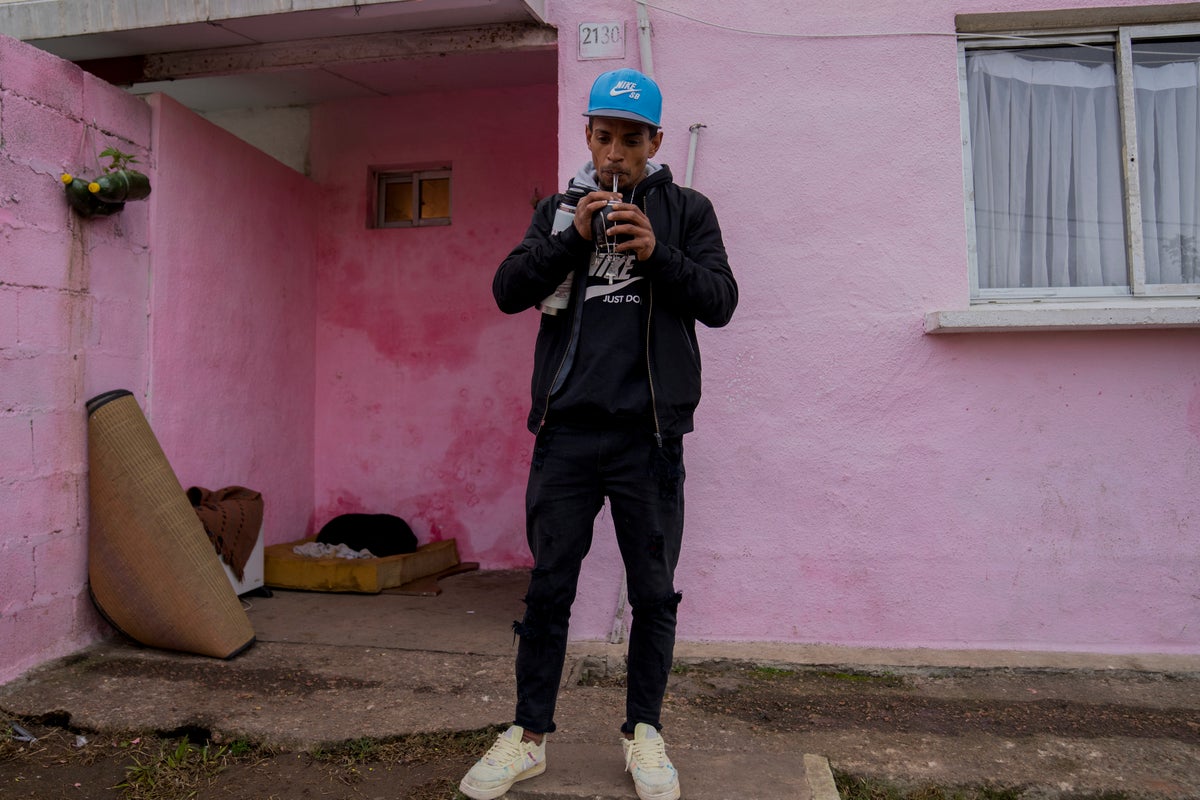
Residents of Uruguay’s capital are increasingly exasperated after two months of salty-tasting tap water that has damaged water heaters, boosted demand for bottled water and reportedly caused stomach ailments.
The water “comes out saltier and saltier so you can’t drink it, but you’re thirsty and so you need to drink it,” said homemaker Natalia Moreira, 33, who lives in one of Montevideo's poorer neighborhoods. She added that she and her children have been suffering stomach aches and diarrhea.
“Now I have a coffee and go straight to the bathroom. Before, that didn’t happen to me," Moreira said.
People in Uruguay have always been able to safely drink the water that comes from their taps, unlike in some other Latin American countries. But the country is now suffering its most severe drought in 44 years, following decades without investment in freshwater reservoirs. The reservoir behind Uruguay’s largest dam, Paso Severino, is only 2.6% filled.
The Santa Lucia River, one of the most important waterways in the nation, supplied fresh water to Montevideo and the surrounding area for more than 150 years — until the first days of May of this year. Authorities began drawing water instead from the Rio de La Plata River.
The only near-term solution is rain, says President Luis Lacalle Pou.
He has warned that water quality is likely to worsen before it improves. In early May, the health ministry doubled the maximum allowable levels of chloride and sodium. Those values are likely to increase further, Lacalle Pou has warned.
Levels in May and June of chloride, sodium, total dissolved solids, iron and trihalomethanes — a compound that has been associated with certain cancers — already have exceeded average values previously allowed by drinking water regulations in Uruguay, the Regulatory Agency For Water and Energy said.
Whether the new water regulations will translate into adverse effects is an ongoing debate.
Arturo Briva, dean of medicine at the University of the Republic, wrote in a letter to Montevideo's mayor Friday that there is little evidence of such effects so far, but said that doesn’t mean they aren’t happening.
With more questions than answers, plus conflicting claims about the water’s safety, it’s small wonder residents are leery. And anecdotal reports abound. Álvaro Sosa, 31, said he no longer has fully solid bowel movements.
“That worries me,” said Sosa, 31, who lives with seven others in Montevideo’s working-class Malvín Norte neighborhood. “More or less the same thing happens to all of us.”
Health officials have pushed back against widespread claims that the water causes stomach issues. The health ministry has said the ailments are more likely due to viruses, and assured the public as recently as two weeks ago that the water “is suitable for human consumption.”
However, the ministry has also cautioned that people suffering from certain health conditions and babies under two should not drink water from the tap.
Widespread concern has left residents of Uruguay's Montevideo and Canelones departments scrambling for bottled water, and increased demand has boosted its cost. The price of a six-liter drum of water jumped 10% in June from May, according to the economy ministry.
That makes bottled water even less accessible for the South American country’s poorer citizens. In a nation with approximately 3.5 million people, 549,000 people have monthly incomes below 25,000 pesos ($640) and there are an additional 141,000 unemployed, according to figures from the Cuesta Duarte Institute, a union-backed research organization.
Sitting on a narrow path at the door of their house in Malvín Norte, Carlos Ibarra and María Abreu spoke while surrounded by their children, who they have forbidden from drinking tap water since they started suffering stomach aches and diarrhea.
The two dogs drink boiled tap water, but Ibarra and Abreu won’t use that for their mate, the popular herbal infusion. And their family doesn’t earn enough to spend some $15 each day on bottled water.
“That’s 18,000 pesos per month ($460). That’s a (monthly) salary,” said Ibarra, who collects and sells plastic bottles for recycling. Abreu, his wife, works in a food store and earns 20,000 pesos a month.
Lacalle Pou's administration on Tuesday announced that he has sent a bill to Congress that would provide bottled water to 500,000 people with low incomes in Montevideo and Canelones departments, the two most affected by the drought. Together they have a population of about 1.8 million.
Beyond the disagreeable taste and possible health effects of the tap water, Uruguayans’ water heaters are breaking down as heavily sedimented water enters the pipes of homes.
The Southern Hemisphere is in the heart of winter, and the temperature in Montevideo can drop as low as 36 degrees F (2 degrees C). Equipment failures are leaving more and more Uruguayans without a hot shower to stave off the cold - or with the unwelcome expense of fixing their heater.
Enzo Vidoni, who manages a water heater factory outside Montevideo that does repairs, says that last year he used to field five or six repair requests each day. Now it’s up to between 50 and 65.
“I believe this is a learning experience for everyone,” Vidoni said as he showed off containers filled with a thick, mud-like substance that had been removed from the heaters.
“We can’t play around with water.”







